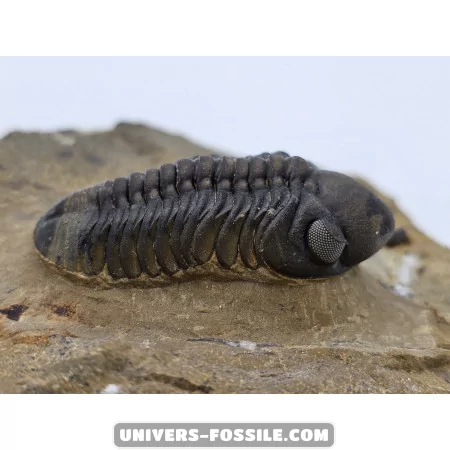Struveaspis Alberti (rare) - Rare Trilobite Fossil for Sale

Struveaspis Alberti (rare) - A Window into Prehistoric Seas
Introduction to Struveaspis Alberti
Struveaspis Alberti is a genus of extinct arthropod from the Phacopida order that thrived in the Devonian period about 400 million years ago. This fascinating creature roamed the ancient oceans, showcasing remarkable adaptations and characteristics.
Discovery and Naming
Unveiled in the fossil-rich layers of the Lower Devonian Hunsrück Slate formation in Bundenbach, Germany, Struveaspis Alberti gets its name from the celebrated Russian paleontologist Boris Struve and honors the collector Alberti Fischer who greatly contributed to fossil studies in the region.
Physical Characteristics
Measuring about 5 to 8 centimeters in length, Struveaspis Alberti sported a distinct exoskeleton made of hardened segments, offering body protection and support. Its flat appearance and broad cephalon (head) were complemented by compound eyes and antennae-like structures that aided in perceiving the environment and prey.
Habitat and Behavior
During the Devonian era, Struveaspis Alberti inhabited the ancient oceans, displaying unique behaviors and interactions within its ecosystem. Its existence provides valuable insights into prehistoric marine life and evolution.
Struveaspis Alberti (rare) - Rare Trilobite Fossil
Experience the wonders of ancient marine life with this rare Struveaspis Alberti trilobite fossil. Transport yourself back to a time when the oceans were teeming with diverse marine life, and Struveaspis Alberti thrived in this bustling ecosystem. It likely scavenged for food on the ocean floor, using its specialized appendages to sift through sediment in search of small organisms and detritus.
Significance in Paleontology
Struveaspis Alberti is an important species in paleontological research, providing valuable insights into the evolution and diversity of ancient arthropods. Fossils of this genus contribute to our understanding of prehistoric marine ecosystems and the adaptations of early life forms to aquatic environments.
Conclusion
Struveaspis Alberti stands as a testament to the remarkable diversity of life that once inhabited the oceans of our planet. Through the study of its fossils, scientists continue to unravel the mysteries of ancient seas, shedding light on the evolutionary history of Earth and the organisms that shaped it.
